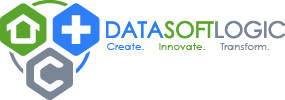The healthcare industry has been immensely challenged by the COVID-19 pandemic. Over the last two years, the different health sectors, including home health care, had to adapt to comply with restrictions and protocols that were set-up to contain the virus. Developments which were already on the works had to be fast tracked and rolled out when the pandemic struck. One of these healthcare trends which have become more prominent and critical last year was RPM or Remote Patient Monitoring. Some say that it is the future of healthcare but what is it really?
To keep you up to date with the latest industry trends, we answer your frequently asked questions on RPM.
- What is RPM?
Remote patient monitoring is the process of collecting and interpreting digitally stored and transmitted physiological data such as blood pressure, glucose levels, weight, heart rate, etc. It is considered to be a subset of telehealth and allows for patient-generated data to be transferred timely from the patient to their care team and vice versa.
- How does RPM work?
RPM makes use of digital technology devices to allow communication between patients and healthcare providers. Through these devices, patients and care providers can monitor their health data by themselves all throughout the day. After which, they can securely transmit these data to their clinicians. The data can then be interpreted and evaluated by healthcare professionals to make recommendations and changes to the patient’s treatment or care plan.
- What are the benefits of RPM?
There are a handful of benefits to using RPM. One of the most important is that it allows for better clinical decision making. With the data regularly transmitted back and forth between the patient and the care team, the latter can assess how the patient’s symptoms change over time and identify trends. Given this, the care team can revise the care plan to fit the patient’s needs. Another is that RPM provides patients the opportunity to manage their own condition with readily available tools, thus improving access to care. This is particularly helpful for those patients which are residing in remote areas and have no ready access to specialists. Other benefits are reduced spread of infections such as COVID-19 as well as reduced total healthcare costs due to improved agency efficiency, lower administrative costs, and higher clinical staff productivity.
- What are the common RPM devices?
RPM makes use of wired and wireless devices such as biosensors, glucometers, implantables, blood pressure cuffs, pulse oximetry, anticoagulation testing device, smart scales, and many more.
- How important is RPM to home health?
RPM, although not the top profit source for agencies, strengthens the relationship of the HHA with the physician. The agency can manage RPM for the physicians by installing a device in the patient’s home or making the patient wear one to monitor vital signs, etc. The readings are then relayed to the physician and the physician can bill for these RPM sessions. Through identifying trends and patterns, the agency and physician can then predict whether the patient will need a higher level of care soon or not and provide interventions that will prevent that from happening.
Data Soft Logic, as the software always on your side, is here to answer your questions about the latest healthcare trends. To know more about how Home Health Centre, our software solution designed specifically for home health care can help you. Schedule a demo with us now.






